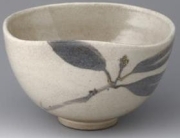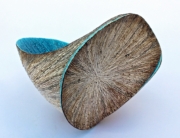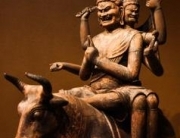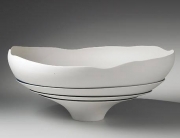The term Tamba Yaki refers to ceramics made in the village of Tachikui, Hyogo. This area has been involved in the ceramics trade for over eight centuries. There are few places in Japan that have such a consistent art tradition. Tamba Yaki is one of the six ancient Japanese pottery styles, and is certainly one of the oldest. That being said, the style has changed quite a bit over the years. For instance, Momoyama period Tamba pieces from the late 16th century have a refined feel that earlier pieces lack.
Momoyama era pieces feature a greenish glaze. This was actually the result of a happy accident. These examples of Tamba Yaki were fired in anagama cave kilns and these ovens left certain deposits in the glass. While this may have been thought of as a byproduct of the firing process at the time, this glaze has increased the collectible nature of these pieces.
Right at the end of Momoyama period, potters invented a type of kiln that was built on a slope. These noborigama units allowed them to produce a wide new variety of ceramics. By the early Edo years, the area started to export a good deal of pottery for feudal lords. Guidance from Enshu Kobori meant that the tea ceremony was becoming increasingly important, and local potters were taking on record numbers of orders. As the Edo period started to come to a close, many new techniques were introduced.
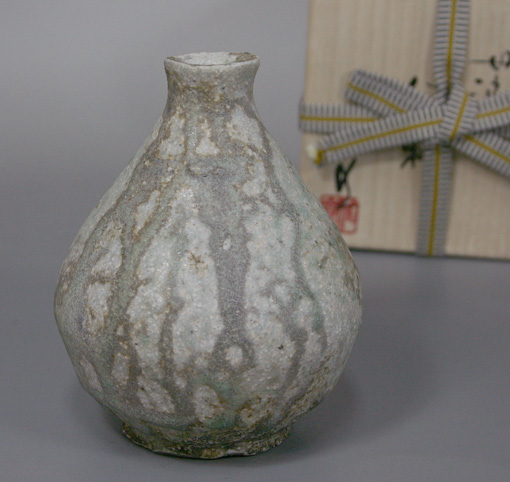
Photo credit: Artistic Nippon, “Ichino Masahiko”
Clay refining technology had come into its own, and popular tastes changes. This meant that Akadobe-yu became a major seller. It featured a deep red glazing that was a good deal different than the previous designs. While modern people are probably used to buying pottery in a number of different colors, this was actually quite innovative at the time. Different areas of Japan were mostly associated with a single glazing pattern and Akadobe-yu shattered that paradigm to pieces.
Shiro Tamba became quite popular as well. Pieces that carry this name are made out of fine white clay. Nevertheless, tanbayaki was still sold only regional into the early 20th century. At that time the Japanese arts and crafts movement created a push for rustic pottery. While many art critics once criticized tanbayaki for its perceived imperfections, people then started to praise it for its unique local flavor. In fact, this movement is the reason for it enjoying so much national popularity in the modern era.
Many pieces of tanbayaki have become precious yakimono art today. One of the things that never changed despite the progress of time was the simplicity that many of these pieces had. They are not intricate, and many of them became misshapen when they were fired. Collectors, however, adore the simple designs and natural imperfections. Organic designs are considered to be supreme since no design is perfectly straight in nature.
Yakimono art continues to be produced in Tachikui, Hyogo to this day. There’s some debate over whether or not newer pieces can be considered legitimate Tamba Yaki pieces, but most collectors don’t really mind. Some people are dedicated to certain eras while others collect pieces from a wide variety of time periods.
Historically, most Tamba yakimono pieces were storage jars or vases. The clay that they were made from is rich in iron, which is where the characteristic red color comes from. Despite this, there are also some famous sake bottles from the area. Tachikui area artists have additionally become famous for the slip trailing technique or itchin that allows them to put a marking on sake bottles to indicate who owned them. Some of these markings are works of art in their own right.



